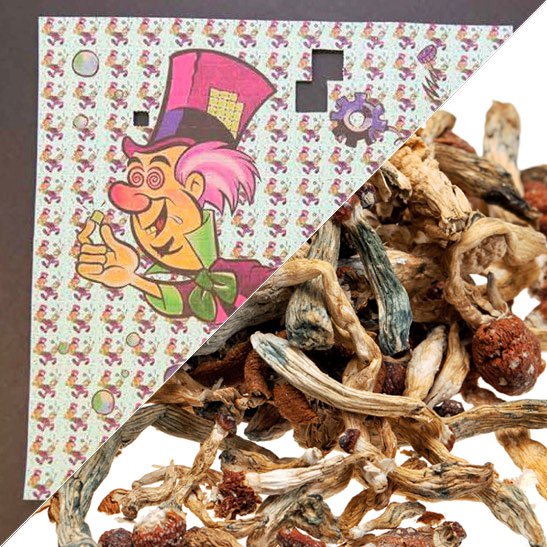Read the Interesting Facts About Golden Psycho and Its Impact.
Read the Interesting Facts About Golden Psycho and Its Impact.
Blog Article
Everything About Psychotomimetic Compounds: Their Function in Psychological Research
Psychotomimetic compounds, such as LSD and psilocybin, have actually garnered enhancing passion in psychological research for their capacity to duplicate psychotic symptoms and supply insight into different psychological wellness problems. Their interactions within the brain, especially via serotonin and dopamine pathways, suggest a complicated partnership in between awareness and neurobiology that may open unique healing avenues. As researchers proceed to explore their possible applications, ethical considerations surrounding their usage in scientific setups come to be paramount, raising important inquiries concerning safety and security and informed permission that require additional expedition.
Meaning of Psychotomimetic Substances
In the world of mental research study, psychotomimetic substances are materials that can induce effects resembling those of psychosis, such as hallucinations, delusions, and altered perceptions of fact - About Golden Psycho. These substances can be identified right into numerous groups, consisting of hallucinogens, dissociatives, and particular energizers, each creating unique psychological effects
The medicinal action of psychotomimetic substances frequently involves inflection of neurotransmitter systems, specifically those pertaining to serotonin, dopamine, and glutamate. Substances like lysergic acid diethylamide (LSD) primarily act on serotonin receptors, leading to extensive modifications in sensory understanding and cognition.
The utility of psychotomimetics in research study hinges on their capacity to simulate psychotic signs, providing a version for comprehending the underlying devices of psychotic conditions such as schizophrenia. By examining the results of these substances, scientists can get insights right into the neurobiological and psychological processes that add to psychosis.
In addition, psychotomimetic compounds have actually been explored for their restorative potential in dealing with various psychological health and wellness conditions, consisting of anxiety and anxiousness, highlighting their double function in both research and prospective clinical applications.
Historic Growth and Context
The exploration of psychotomimetic substances has a rich historic context that dates back to ancient human beings, where substances such as psilocybin mushrooms and peyote were made use of in spiritual and recovery techniques. These early usages frequently linked with religious rituals, recommending a profound respect for the modified states of awareness induced by these compounds.
The mid-20th century noted a significant switching factor in the study of psychotomimetic compounds, specifically with the synthesis of LSD by Albert Hofmann in 1938. The subsequent popularization of LSD in the 1960s catalyzed a wave of interest in both its psychological impacts and possible restorative applications. Researchers started to explore how these substances could simulate psychotic states, giving insights into mental disorder.
However, the enhancing organization of psychotomimetics with counterculture activities brought about regulatory backlash, culminating in the criminalization of a number of these substances. Despite these obstacles, the renewal of passion in the healing possibility of psychedelics in the 21st century has actually motivated restored study. This historical trajectory emphasizes the evolving understanding of psychotomimetic substances, changing from sacred compounds to subjects of scientific query and, potentially, healing pledge.
Mechanisms of Activity
Comprehending the devices of activity of psychotomimetic substances discloses the complex methods these materials engage with the mind's neurochemistry. These compounds mainly exert their effects via inflection of neurotransmitter systems, particularly serotonin, dopamine, and glutamate. Many classic psychedelics, such as psilocybin and LSD, largely act as agonists at serotonin 5-HT2A receptors, leading to transformed assumption and cognition. This communication not only influences sensory handling however also boosts emotional and introspective experiences.
Along with serotonin, dopaminergic paths are significantly affected by compounds like mescaline and particular cannabinoids, which can bring about modified states of consciousness and modifications in mood and inspiration. The NMDA receptor incongruity observed with compounds like ketamine highlights another pathway via redirected here which psychotomimetics may cause dissociative states and extensive modifications in assumed processes.
The neurochemical waterfalls launched by these interactions lead to complicated and complex psychological impacts. Recognizing these mechanisms is crucial for both the innovation of psychological research study and the healing potential of psychotomimetic compounds, as they give insights into the underlying neural correlates of modified states of awareness.
Current Study and Applications
Recent investigations into psychotomimetic substances have disclosed a resurgence of rate of interest in their healing applications, specifically in the areas of psychiatry and psychology. Scientists have actually started exploring substances such as psilocybin, LSD, and ayahuasca for their potential to minimize signs connected with different psychological health and wellness conditions, consisting of anxiety, anxiousness, and PTSD.
Clinical tests have actually shown that, when carried out in regulated atmospheres, these compounds can help with profound psychological experiences, advertising emotional developments and boosted restorative results. For instance, studies have actually revealed that psilocybin-assisted therapy can result in substantial decreases in treatment-resistant anxiety, with effects lasting for several months post-treatment.
Moreover, psychotomimetic substances are being assessed for their ability to cultivate neuroplasticity, potentially enabling even more efficient rewiring of maladaptive thought patterns. These findings suggest that such compounds may function as adjuncts to typical psychotherapeutic techniques, enhancing the efficiency of therapeutic treatments.
As research study progresses, the emphasis is shifting in the direction of comprehending the optimum dosages, healing settings, and participant characteristics that can optimize the benefits of these substances. This growing area holds guarantee for changing mental wellness treatment standards and addressing the limitations of standard psychiatric drugs.
Ethical Considerations in Study

Browsing the ethical landscape of study including psychotomimetic More hints substances is important to making certain participant safety and security and the integrity of research study outcomes. Researchers have to prioritize enlightened permission, making certain that participants completely recognize the potential dangers and advantages associated with the compounds being researched. This consists of offering thorough information about possible emotional results, including severe and long-lasting influences, and allowing individuals the possibility to withdraw from the study any time scot-free.
Moreover, ethical oversight by institutional evaluation boards (IRBs) is crucial. IRBs evaluate research procedures to safeguard participant welfare and maintain honest criteria. This analysis aids mitigate risks and guarantees that research studies are performed with clinical roughness. In see this page addition, the possibility for threat must be carefully assessed, especially when vulnerable populations are involved.
Privacy is one more critical consideration. Scientists need to apply durable steps to safeguard individuals' identifications and data, particularly offered the delicate nature of experiences related to psychotomimetic compounds (About Golden Psycho). Inevitably, a dedication to honest methods not only cultivates depend on between scientists and individuals but additionally improves the credibility and legitimacy of the research study outcomes, adding to the improvement of psychological expertise

Conclusion
Finally, psychotomimetic compounds, specifically classic psychedelics such as LSD and psilocybin, deal considerable understandings right into emotional problems via their one-of-a-kind mechanisms of activity. Their healing capacity in dealing with conditions like stress and anxiety and PTSD emphasizes the importance of continued research in this area. Making sure honest requirements in research methods is important for individual safety and security and educated authorization, permitting for an accountable exploration of these compounds' benefits and implications within emotional scientific research.
Report this page